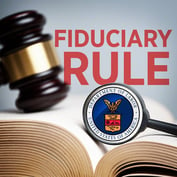Although it has been over 3 years since Congress enacted Internal Revenue Code Section 409A, it continues to dominate the financial headlines. Signed into law by President Bush as part of the American Jobs Creation Act of 2004, Section 409A was designed to curtail abusive nonqualified deferred compensation (NQDC) design techniques found in the plans of senior executives at Enron and WorldCom.
Certainly, the fact that 409A represents the first substantive change in the income tax laws relating to NQDC plans in decades explains in part this high profile interest. Likewise, the continuing release of proposed regulations in 2005 and the delayed release of final regulations this year, as well as a flurry of IRS Notices regarding 409A as recently as October, has also kept 409A in the news.
Although 409A applies to virtually all types of NQDC plans, with the exception of certain equity and severance plans, it curtails design techniques that were primarily used in the NQDC plans of publicly traded companies. Section 409A has essentially left untouched the unique planning features of NQDC plans that continue to make it a preeminent executive compensation strategy for closely held and family owned businesses. Why? Because the unique planning features and the power of deferred compensation is found, not in the Internal Revenue Code, but in the Employee Retirement Income Savings Act of 1974.
Understanding ERISA
ERISA was enacted to protect the interests of America’s workers promised them by employer-sponsored retirement and benefit plans. The Internal Revenue Code mandates contribution, top-heavy, distribution and reporting standards in order for an employer to “qualify” for a deduction for plan contributions. Likewise, ERISA mandates participation, vesting, funding, and fiduciary standards for all pension benefit plans and welfare benefit plans.
An employee pension benefit plan is a plan or fund established and maintained by an employer to provide retirement income to employees or one that results in the deferral of income by employees for periods terminating at or after retirement. An employee welfare benefit plan is one established or maintained by an employer to provide to employees or their beneficiaries, through the purchase of insurance or otherwise, benefits including medical, surgical, or hospital benefits, benefits for sickness, accident, disability, death, unemployment, or vacation. Any NQDC plan, therefore, that offers employees retirement benefits, deferral of income to retirement, disability benefits or death benefits will be covered under ERISA as either an employee pension benefit plan or an employee welfare benefit plan or as both.
The good news is that Congress provided an exception to ERISA’s extensive regulatory scheme for plans that are “offered by an employer on an unfunded basis primarily to a select group of highly compensated or management employees.” Commonly known as the “Top-Hat exception,” the Department of Labor has not issued regulations interpreting the definition of the Top-Hat exception. The DOL has, however, stated the Congressional rationale supporting the enactment of this exception. Top-Hat recognizes that certain employees who, “by virtue of their position or compensation level, have the ability to affect or substantially influence, through negotiation or otherwise, the design and operation of their deferred compensation plan, taking into consideration any risks attendant thereof,” do not need the protection of ERISA Title I.
Top-Hat excites business owner prospects when they understand that a properly designed deferred compensation plan is essentially ERISA-exempt. An employer has the opportunity, in partnership with you, the advisor, to custom-design an executive compensation strategy to fit his or her requests. An employer may pick and choose which key employees to include in the plan.
They can incorporate custom-designed vesting schedules that create golden handcuffs to recruit, reward and retain key people vital to the employer’s profitability. In this author’s estimation, this is the key to deferred compensation sales success in closely held and family businesses where the “employer” is the entrepreneurial owner.
Closely held business owners like to be the boss; that’s why they went into business for themselves. Top-Hat enables the boss to be the “boss.” Let’s break down the elements of this valuable exception since an understanding of its working is critical to the design and sale of nonqualified deferred compensation plans.
(1) “Primarily”
The DOL believes that the term “primarily” is synonymous with “exclusively” and that a Top-Hat plan may not include anyone who is neither highly compensated, nor in management. A federal district court, however, defined the term “primarily” as it is commonly used in conversation. Thus, a plan chiefly designed for a select group of employees would not be disqualified merely because some of them were not either highly compensated or managers. That said, most commentators recommend adopting the DOL’s restrictive interpretation.
(2) “Select Group”
There are no DOL rulings on the definition of the term “select group.” Courts have analyzed the select group issue by analyzing the ratio of the percentage of select group to the total of the employer’s workforce. One court found that an NQDC plan covering 4.6% of the employer’s total employees was a select group, while another court disqualified a plan covering almost 20% of all employees as too large. A recent Second Circuit case, however, found that a plan offered to 15% of the employer’s workforce constituted a “select group.”
(3) “Highly Compensated”
The DOL has not defined the term “highly compensated.” Some commentators have suggested that the IRC Section 414(q) qualified plan definition of highly compensated (a 5% or greater owner, or employees with compensation in the previous year of $100,000 in 2007 ($105,000 in 2008, as indexed) should be used for purposes of the Top-Hat exception.
Courts have generally determined if a covered employee was highly compensated by comparing the employee’s salary with the average salary of the employer’s entire workforce on a “facts and circumstances” basis. In one case, a court found a group of employees highly compensated when their average salary was $55,000 as compared to an average of $16,000 for the entire work force. Another court found that a group of employees with average salaries of $31,528 was not highly compensated when compared to the average compensation for two non-covered employee groups of $24,501 and $19,121.
(4) “Management”
The DOL has no definition of the term “management.” In withdrawn rulings from the 1970s and 1980s, the DOL typically took a narrow view of the term “management,” linking it to the term “select.” In one such ruling, the DOL stated that an NQDC plan with management participants comprising less than 4% of the employer’s active employees qualified as a Top-Hat, while in another ruling it found that a plan which included all members of the employer’s executive payroll would not constitute a Top-Hat plan. The DOL has focused more on the select nature of the group than on its management duties.
(5) “Unfunded”
Although ERISA does not specifically define “unfunded,” the DOL has stated that it has adopted the constructive receipt definition for “unfunded” found in Revenue Ruling 60-31, that is, a plan which provides benefits from the employer’s general assets on an unsecured basis.








 January 13, 2008 at 02:00 PM
January 13, 2008 at 02:00 PM









